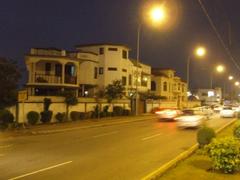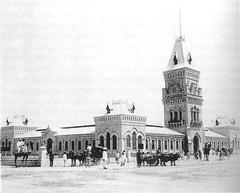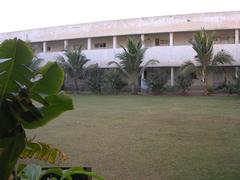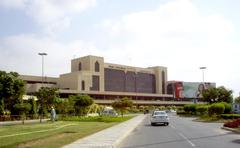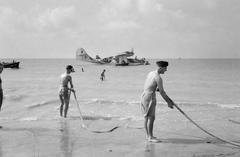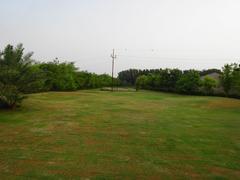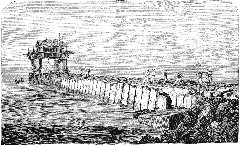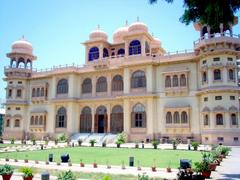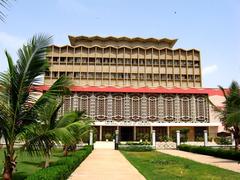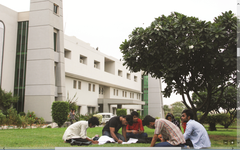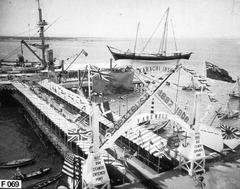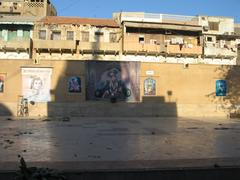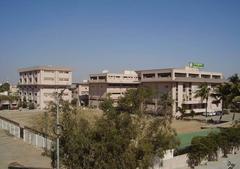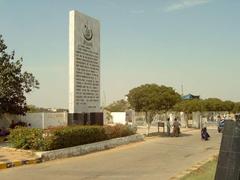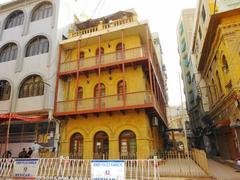Mazar-e-Quaid Visiting Hours, Tickets, and Historical Significance in Karachi
Date: 14/06/2025
Introduction
Mazar-e-Quaid, also known as the Jinnah Mausoleum or National Mausoleum, stands at the heart of Karachi as a profound symbol of Pakistan’s identity, unity, and reverence for its founding father, Muhammad Ali Jinnah. Since its completion in 1971, the monument has served as Jinnah’s final resting place and as a site of national reflection, commemoration, and pride. The mausoleum’s iconic white marble structure, set amidst serene gardens, draws visitors from across Pakistan and around the world, offering a unique window into the country’s history and aspirations (Wikipedia).
This detailed guide covers the historical background, architectural significance, visiting hours, ticketing information, accessibility, and practical travel tips to help you make the most of your visit to this Karachi historical landmark.
Historical Background
The Genesis and Evolution
After Muhammad Ali Jinnah’s death in 1948, his initial resting place was marked simply, reflecting the conditions of a nascent nation. Recognizing the need for a memorial befitting his stature, the Quaid-e-Azam Memorial Fund (QMF) was established in 1949 to oversee the creation of a grand mausoleum (Graana).
Multiple design competitions and proposals followed, with debates reflecting Pakistan’s search for national identity. Fatima Jinnah, Jinnah’s sister, played a pivotal role in steering the selection toward a design that resonated with local aspirations, ultimately commissioning architect Yahya Merchant, whose vision harmonized modernist and Islamic motifs (Tourism in Pakistan). The mausoleum was completed in 1971, and the gardens were finished by 2000.
National and Cultural Significance
Mazar-e-Quaid is more than a tomb; it is a locus for national commemoration and unity. In addition to Jinnah, other eminent leaders such as Mohtarma Fatima Jinnah and Liaquat Ali Khan are also interred here, reinforcing its role as a site of collective national memory. The mausoleum is the central venue for key events, including Pakistan Day, Independence Day, and Jinnah’s birthday, marked by official ceremonies and widespread public participation (Guide to Pakistan).
Architectural Significance
Design and Symbolism
Mazar-e-Quaid’s architecture epitomizes a blend of modernism and Islamic tradition. The mausoleum’s clean lines, geometric forms, and prominent dome are crafted from white marble, symbolizing purity and reverence. Four minarets at each corner represent the unity of Pakistan’s provinces, while the Moorish arches and central dome echo Mughal influences (Tourism in Pakistan).
The monument stands on a 4-meter high platform, with a footprint of 75 by 75 meters and a height of 43 meters. The structure is accessible from all four sides, embodying inclusivity. The grand chandelier inside, gifted by China, and intricate copper latticework add to its elegance (Travel Pakistani).
Gardens and Surroundings
The mausoleum is enveloped by 53 hectares of landscaped gardens, featuring terraced walkways, fifteen successive fountains, and lush lawns—a tranquil oasis within Karachi’s urban sprawl. At night, the illuminated marble edifice is visible from afar, making it a striking landmark (Karachi Views).
Visiting Mazar-e-Quaid: Hours, Tickets, and Practical Information
Visiting Hours
Mazar-e-Quaid is typically open daily from 9:00 AM to 6:00 PM, although hours may vary during public holidays or special events. It is advisable to check ahead for the latest timings, especially if visiting during national celebrations (HalalTrip).
Tickets and Entry Fees
Entry is free for both local and international visitors. No ticket is required to enter the mausoleum or gardens. Some special museum exhibits or sections may charge a nominal fee (usually under PKR 200). Always verify at the entrance or on official platforms (TravelSetu).
Dress Code and Etiquette
Visitors are expected to dress modestly: long trousers and sleeved shirts for men, loose clothing and scarves for women, especially within the mausoleum. Shoes may need to be removed in certain areas—follow local customs and signage (JBMS).
Accessibility
The site is wheelchair accessible, with ramps and wide walkways. Some older sections may have steps, but assistance is available on request. Families with strollers and senior visitors find the site accommodating.
Facilities and Amenities
- Restrooms: Located near the main entrance and are clean.
- Seating: Shaded benches are available throughout the gardens.
- Souvenirs: Kiosks sell memorabilia, books, and handicrafts.
- Drinking Water: Bring bottled water, especially in summer.
- Prayer Facilities: While no dedicated mosque is on-site, the park’s open spaces are suitable for prayer; nearby mosques are easily accessible (HalalTrip).
- Parking: Ample, but can fill during events; public or app-based transport is recommended for convenience.
Guided Tours
Official guided tours are available at the entrance (typically PKR 500–1000), offering detailed historical and architectural insights. Booking ahead is recommended during peak seasons (TravelSetu).
Photography
Photography is permitted in the gardens and exterior areas, ideal for capturing the monument’s grandeur. Restrictions may apply inside the mausoleum, especially during official ceremonies—always check with staff.
Events and Ceremonies
Mazar-e-Quaid is the focal point for:
- Pakistan Day (March 23)
- Independence Day (August 14)
- Jinnah’s Birthday (December 25)
- Other national commemorations
These days feature wreath-laying, military parades, and cultural programs. Expect large crowds, enhanced security, and possible access restrictions during such events (TravelSetu).
Safety, Health, and Travel Tips
- Security: The site is well-guarded; routine checks at entrances are standard.
- Health: First aid is available on-site; the nearest hospital is a short drive away.
- Weather: Best to visit from November to February for mild temperatures.
- Transport: Centrally located in Jamshed Quarters, accessible by car, taxi, ride-hailing apps, and public transport.
- Language: Urdu and English are widely spoken; signage is bilingual.
Nearby Attractions
Enhance your Karachi experience by visiting:
- National Museum of Pakistan
- Mohatta Palace
- Frere Hall
- Empress Market
- Clifton Beach
All these sites offer rich cultural and historical insights (TravelSetu).
Frequently Asked Questions (FAQ)
Q1: What are the visiting hours for Mazar-e-Quaid?
A1: Daily from 9:00 AM to 6:00 PM, with possible variations during holidays or events.
Q2: Is there any entry fee or ticket required?
A2: General entry is free; small charges may apply for certain museum sections.
Q3: Are guided tours available?
A3: Yes, official guided tours are offered for a nominal fee.
Q4: Is the mausoleum wheelchair accessible?
A4: Yes, with ramps and wide walkways throughout the site.
Q5: Can I take photographs at Mazar-e-Quaid?
A5: Photography is allowed outside; check for restrictions indoors.
Q6: What is the best time to visit?
A6: November to February, early mornings or late afternoons.
Q7: How do I get there?
A7: Easily accessible via car, taxi, ride-hailing services, public buses, and the Green Line Metro.
Summary and Visitor Tips
Mazar-e-Quaid is an enduring emblem of Pakistan’s heritage and a must-visit for anyone interested in the nation’s history. Its free entry, accessible facilities, and guided tours make it welcoming for all. Plan your visit to coincide with cooler months for comfort, and consider combining your trip with other nearby historical sites for a fuller cultural experience. Download the Audiala app for real-time updates on timings, tours, and events.
Reliable Sources and Further Reading
- Wikipedia
- Graana
- Tourism in Pakistan
- Guide to Pakistan
- Karachi Views
- Travel Pakistani
- HalalTrip
- TravelSetu
- JBMS
